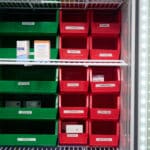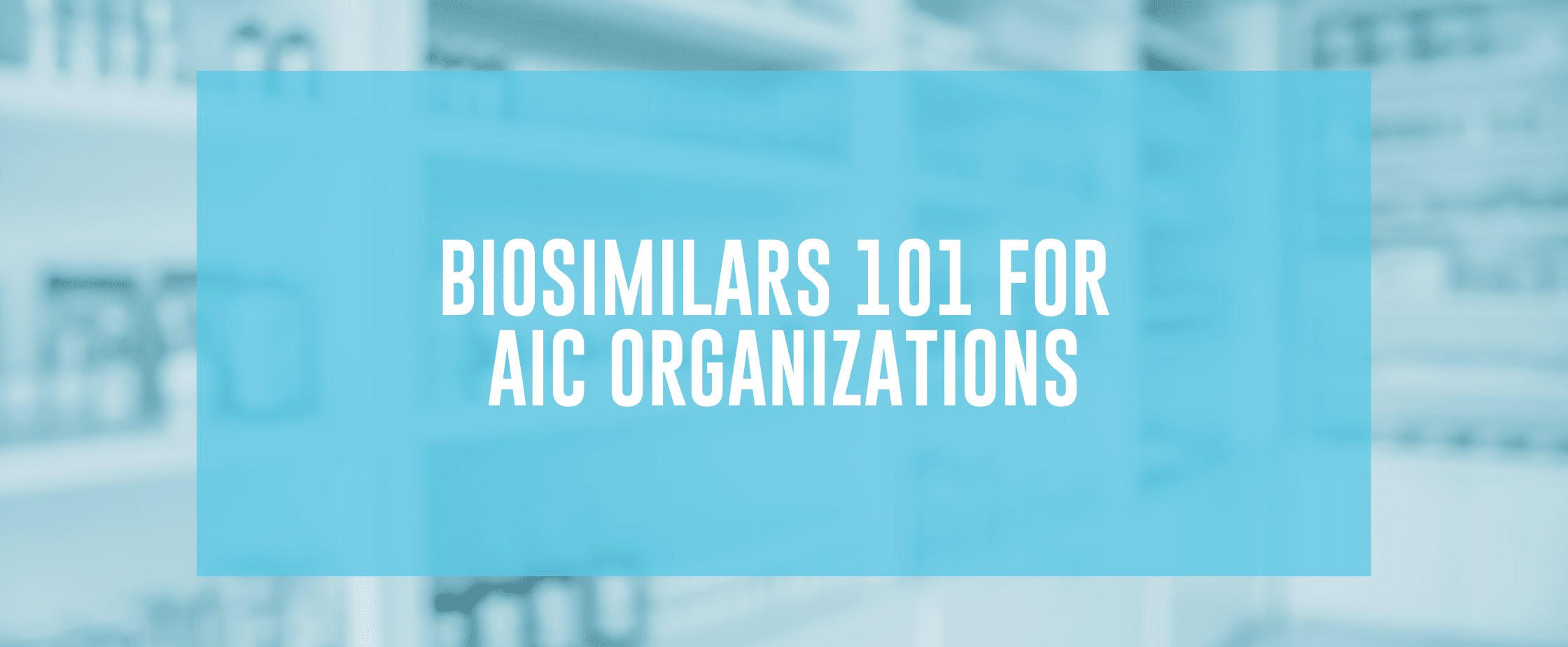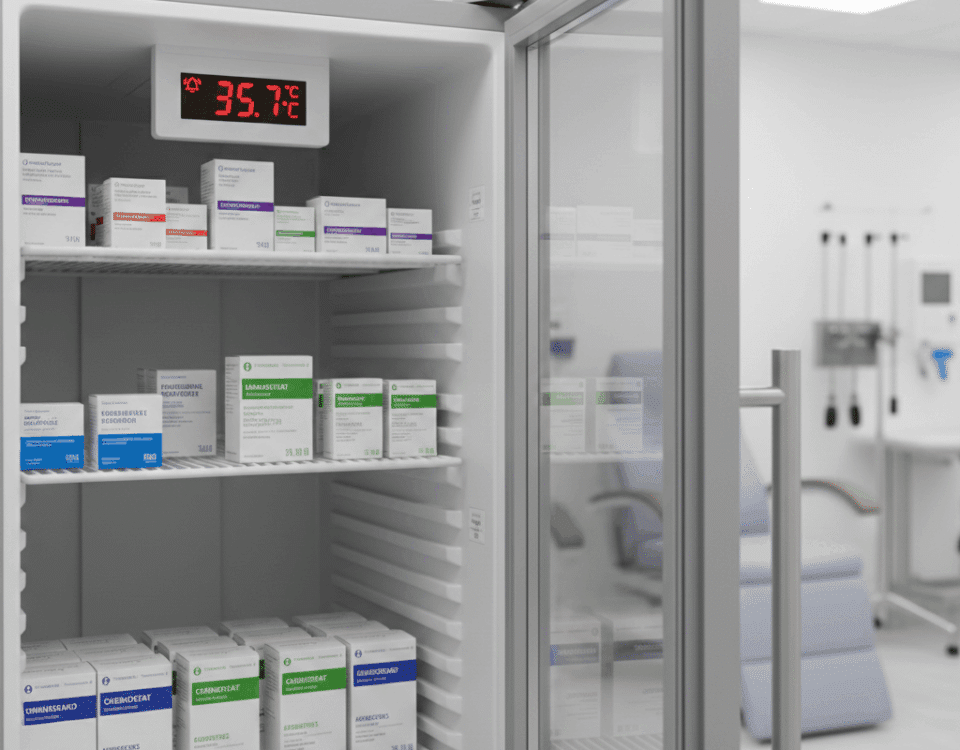By: Michael Rigas, Pharm.D., FNHIA
Biosimilars are also known as follow-on biologics or subsequent-entry biologics. They are FDA-approved copies of the original “innovator” drug product that are allowed to be licensed and approved by the FDA once the innovator product’s patent expires. The Biologics Price and Competition Act (BPCA) was introduced by Senator Edward Kennedy in 2007 and was passed by Congress and signed by President Obama in 2010 as part of the Patient Protection and Affordable Care Act (ACA).
The Concept of “Similarity” in Biosimilars
- Any differences between the biosimilar and the Innovator products must be not clinically significant.
- Must be similar in their ability to cause immunogenicity.
- Must be similar in their pharmacokinetics (how the drug is absorbed and eliminated by the body).
- Must be similar in their pharmacodynamics (how the drug affects the body).
- Must be similar in their safety, purity, and potency.
- Must be FDA approved for one or more of the indications that the Innovator product was approved for by the FDA.
- The first drug that was FDA-approved as a biosimilar was the biosimilar version of Neupogen called Zarxio in 2015.
- Most commonly, the biosimilar product’s acquisition cost is 20-30% less than the Innovator product, which is supposed to have a cost-effective impact on insurance companies and patients.
- Currently, there are 39 biosimilars approved for use in the United States.
Please see this link for a list of the currently available biosimilar products.
Understanding the Impact of Biosimilars
Understanding the impact of biosimilars on the healthcare system, the delivery channel, and patients is important. Here are some key takeaways.
Cost Reduction to the American HealthCare System
As of late 2022, there are 39 approved biosimilars of 11 previously approved innovator products, with 22 biosimilars currently on the market. It is estimated that biosimilars have saved over $7 billion in 2021. It has also been shown that due to insurance companies embracing biosimilars (versus increasing step edits for Innovator products) can result in lower out-of-pocket costs for patients and easier approval processes (see reference #1).
Patient Out of Pocket Costs
The cost savings impact of biosimilars in the United States has not had the expected impact on prices. Traditionally, biosimilar drugs are priced 25-35% less than the Innovator product. The insurance companies then pass these lesser prices to the patients in the form of lesser out-of-pocket costs to the patient. However, many Innovator product companies offer significant rebates to the insurance company that cause them to prefer these Innovator products to the less-costly biosimilar products. Then the patient is forced to pay the higher out-of-pocket costs accompanying the Innovator product. This innovator product rebate program circumvents the original intent of the biosimilar model concept. Many states and other patient support groups are advocating to end these practices so that more patients are able to experience the lesser out-of-pocket costs that were intended to be part of the biosimilar concept.
Ordering Physician
Physicians may also be adversely impacted by biosimilars since they may not have control over which products are approved for their patients (Innovator products versus biosimilar products) as individual insurance companies’ strategies vary dramatically. So, an ordering MD with 100 patients that may need the anti-TNF drug Infliximab (brand name Remicade) may wind up with dozens of patients on each of the four (4) available products. This presents a complex situation for the ordering MD who may face various concerns and responses from their patients about the drugs they are forced to take by their insurance.
Insurance Companies
Insurance companies have a great opportunity to create strategies that could save money for their patients or make money for themselves. Either way, the process is complex and time-consuming and involves much time and energy on the part of the insurance company. These policies are also transient and may need to change whenever another biosimilar product hits the market.
Patient and Caregivers
Patients and caregivers are significantly impacted by the biosimilar concept since they may have the ability to save out-of-pocket costs. However, based on some of the above-mentioned strategies, they may also have to pay higher out-of-pocket costs than expected if prescribed a drug with an available biosimilar. Since most patients are likely to be on these drugs for a significant period, they may be forced to switch between products and experience a change in out-of-pocket costs as insurance companies update their formularies on a yearly basis.
Inventory Management
Biosimilars present a challenge for inventory management since enterprises must order and stock many versions of the same drug. They must also arrange for the proper cost-effective purchasing of each product. Pharmacy enterprises need to have the ability to sell it to the insurance company at a reasonable profit and be able to clinically manage patients on multiple versions of the same drug. Boards of Pharmacy have enacted rules for the use of biosimilars. Typically, most states require the pharmacy to notify, and or, obtain consent from the MD when a biosimilar is substituted for an Innovator product at the request of their payer or as a result of which products are available to the pharmacy (see reference #2 for a listing of each state’s requirements).
Suggestions for AICs Navigating A Biosimilar Future
Operators of ambulatory infusion centers (AICs) infusing drugs available as biosimilars (for example, Rituxan and Remicade) will need to coordinate the above-discussed issues between the physician, insurance company, pharmacy, and the patient. The best way to manage these issues is to always be on the offensive. This can involve recording these important facts in a spreadsheet you create, including:
- Which Innovator drugs are available as biosimilars for the diseases you treat?
- For your patients’ top 10 payors, which biosimilars or Innovator products are on their formulary?
- Are you contracted with these payers to bill them for these drugs?
- What are these financial parameters for each drug?
- AWP
- ASP
- WAC
- For each biosimilar and Innovator product that you plan to infuse, what financial assistance programs are available?
- For your top 10 prescribing physicians who prescribe drugs available as biosimilars, what do they prefer? The Innovator or an available biosimilar?
- Do any Innovator products or biosimilars require special purchasing actions, contracts, or training?
- Do any of these Innovator products or biosimilars have FDA-required REMS programs?
About the Author
Our guest blog author, Michael Rigas, Pharm.D., is the Chief Clinical Officer, Emeritus of KabaFusion, LLC, in Cerritos, California. Any readers looking to explore this topic in greater detail are encouraged to contact Dr. Rigas at [email protected]
About the National Infusion Center Association
NICA is dedicated to ensuring that the nation’s infusion centers remain a safe, more efficient, and more cost-effective alternative to hospital settings for consistent, high-quality care.
Infusion providers have a vested interest in the sustainability of the infusion delivery channel and its ability to serve vulnerable patient populations. NICA Provider Members have a voice and a seat at the table to inform NICA’s activities and the opportunity to remain highly engaged in the expansion and optimization of the infusion industry. Learn more about becoming a NICA member here: https://infusioncenter.org/member-partner-page
Is your organization interested in becoming a featured subject matter expert on The Infusion Blog? Email [email protected] to inquire about opportunities for participation.





